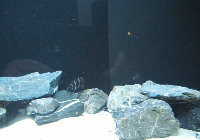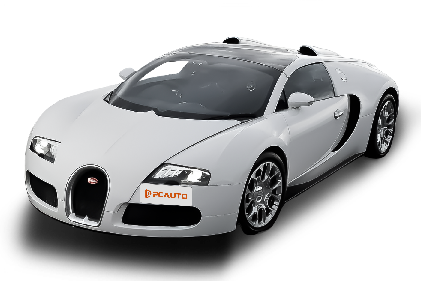Q
How many radiators is the Bugatti Veyron equipped with?
The Bugatti Veyron, as a top-tier supercar, features an incredibly complex cooling system with no fewer than 10 radiators. These are crucial to keeping its monstrous W16 engine and high-performance components running reliably even under extreme conditions. We're talking about the main engine radiator, intercoolers, transmission cooler, differential cooler, and even the A/C condenser—each one pulling double duty to keep specific systems frosty.
Now, this detail matters a lot to Malaysian car enthusiasts. Let's face it, our hot and humid climate is brutal on a car's cooling capabilities. The Veyron's multi-radiator setup? It's basically engineered to laugh in the face of that heat, ensuring you don't lose a single pony when the mercury spikes.
Sure, all these radiators add some heft and complexity, but that's pretty standard fare for high-performance exotics. Brands like Lamborghini and Koenigsegg do similar things—they prioritize keeping that powerplant happy during hard driving over shaving off a few kilos. And hey, if you're lucky enough to own or even maintain one, keep those radiators clean! A buildup of dust or debris can seriously cramp their cooling style, and you don't want that.
Special Disclaimer: This content is published by users and does not represent the views or position of PCauto.
Related Q&A
Q
How long does it take to empty the tank on a Bugatti Veyron?
As a high - performance supercar, the Bugatti Veyron has a fuel tank capacity of approximately 100 liters. It has extremely high fuel consumption when driven at top speed. According to official data, when traveling at a top speed of 407 kilometers per hour, the fuel tank will run out in about 12 minutes. In daily driving conditions, the fuel consumption will be relatively lower, and the specific time depends on the driving style and road conditions.
For car enthusiasts in Malaysia, it should be noted that this kind of supercar is not designed to save fuel but to pursue ultimate performance. Therefore, in the local hot climate and congested traffic conditions, the actual fuel consumption may be even higher.
The Veyron is equipped with an 8.0 - liter quad - turbocharged W16 engine that can output over 1000 horsepower. This kind of power configuration brings an amazing acceleration experience but also means higher fuel consumption.
It is recommended that Malaysian owners, when using this kind of supercar, not only pay attention to fuel economy but also focus on regular maintenance. In particular, they should check the cooling system and lubrication system under high - temperature conditions to ensure that the vehicle is always in the best condition.
Q
Is the Bugatti Veyron faster than the Bugatti Chiron?
Both the Bugatti Veyron and the Bugatti Chiron are legendary models in the super - car world, but the Chiron truly outperforms the Veyron in terms of performance. When the Veyron was launched in 2005, it shocked the world with a top speed of 431 km/h. As its successor, the Chiron, after its release in 2016, further increased the top speed to 420 km/h (the electronically limited version). However, the unrestricted Chiron Super Sport 300+ set a production - car top - speed record of 490.48 km/h in 2019, far exceeding that of the Veyron.
Both cars are equipped with an 8.0 - liter quad - turbocharged W16 engine. Nevertheless, the Chiron's engine has been optimized, with the maximum horsepower increasing from 1001 hp of the Veyron to 1500 hp (in the Chiron Super Sport version). At the same time, the aerodynamics and chassis technology have been improved, resulting in better acceleration and handling.
For car enthusiasts in Malaysia, although these two models are rare locally, their engineering represents the pinnacle of the automotive industry and showcases Bugatti's pursuit of ultimate performance. It's worth noting that the performance of a super - car depends not only on its top speed but also on acceleration, cornering performance, and daily driving experience. The Chiron has been comprehensively upgraded in these aspects, making it more suitable for the needs of modern super - car users.
Q
How long do Bugatti Veyron tires last at top speed?
The tire life of the Bugatti Veyron at top speed is approximately 15 minutes. This is because when the vehicle is traveling at a maximum speed exceeding 400 km/h, the tires are subjected to extreme centrifugal forces and high temperatures, causing the rubber to wear out rapidly. Although the Michelin PAX tires specially designed for the Veyron use high - strength materials and a special structure to handle extreme conditions, rapid wear at top speed is still unavoidable. Therefore, Bugatti officially advises owners to avoid maintaining top - speed driving for long periods to extend tire life and ensure safety.
For owners in Malaysia, although local road conditions cannot meet the Veyron's top - speed requirements, understanding this helps in better maintaining the supercar's tires. During daily driving, attention should be paid to tire maintenance. For example, regularly check tire pressure and wear, and avoid aggressive driving. Additionally, Malaysia's hot climate may also accelerate tire aging, so it is recommended to park the vehicle in a shady place and use appropriate tire protectants.
Q
Why is the Bugatti Veyron so popular?
The reason why the Bugatti Veyron is so popular is mainly due to its status as the benchmark for supercars in the early 21st century. Its 8.0-liter W16 quad-turbocharged engine can output 1,001 horsepower, and its top speed exceeds 407 km/h, making it the fastest production car in the world at that time. This extreme performance has attracted countless car enthusiasts. For Malaysian car enthusiasts, the Veyron is not just a speed machine but also a symbol of engineering art. Its carbon fiber body, active aerodynamic design, and precise hand - made manufacturing process showcase the pinnacle of the automotive industry. The success of the Veyron has also promoted the development of subsequent models such as the Chiron, further consolidating Bugatti's position in the super - car field. It is worth mentioning that although the hot and rainy climate in Malaysia poses challenges to the maintenance of high - performance cars, top - notch supercars like the Veyron are still regarded as treasures by local collectors. Whenever it occasionally makes an appearance at high - end car gatherings in Kuala Lumpur or Penang, it always causes a sensation. Its rarity (only 450 units were produced globally) and legendary status also make it an important symbol in automotive culture.
Q
How much is a Bugatti Veyron full tank?
The Bugatti Veyron has a fuel tank capacity of 100 liters. Based on the current price of RON 97 gasoline in Malaysia (around 3.50 ringgit per liter), it would cost approximately 350 ringgit to fill up the tank. However, as a top - tier supercar, the Veyron usually recommends using higher - grade fuel to ensure its performance, so the actual cost might be slightly higher. The car is equipped with an 8.0 - liter W16 quad - turbocharged engine. While it offers astonishing power, it also has relatively high fuel consumption. In urban driving, the fuel consumption per 100 kilometers could exceed 30 liters, so frequent refueling is the norm.
For car enthusiasts in Malaysia, apart from the fuel cost, they also need to consider the maintenance and insurance costs of such supercars, which are significantly higher than those of ordinary vehicles. Additionally, the hot and humid climate in Malaysia poses a challenge to the cooling system of high - performance engines, making regular maintenance especially crucial.
As a limited - production top - tier supercar, the Bugatti Veyron is rarely seen on Malaysian roads. Its rarity also makes it highly sought after in the collector's market.
Q
What car replaced the Bugatti Veyron?
The successor to the Bugatti Veyron is the Bugatti Chiron. This super - car was officially launched in 2016, inheriting the legendary status of the Veyron and achieving a full - scale upgrade in performance and technology. The Chiron is equipped with an 8.0 - liter quad - turbocharged W16 engine with a maximum power of 1500 horsepower. Its top speed is electronically limited to 420 km/h, and it can accelerate from 0 to 100 km/h in just 2.5 seconds, demonstrating Bugatti's top - notch technological strength in the super - car field. For car enthusiasts in Malaysia, although this kind of super - car is quite rare locally, they still have a chance to appreciate it up close through official dealers or international auto shows. The Chiron not only continues the extreme performance of the Veyron but also incorporates more modern technology and luxury design, such as more advanced aerodynamic kits and customized services, further consolidating Bugatti's leading position in the super - car market. It's worth mentioning that Bugatti has also launched several special - edition models based on the Chiron, such as the Chiron Super Sport 300+ and the Chiron Pur Sport, to meet the needs of different collectors.
Q
How many Bugatti Veyron are there in the world?
The Bugatti Veyron is a globally limited-production supercar. According to official data, from 2005 to 2015, including the regular version, the Grand Sport convertible version, the Super Sport high-performance version, and specially customized versions, a total of about 450 units were produced. Among them, the Super Sport version once set a world record for production cars with a top speed of 431 kilometers per hour, demonstrating Bugatti's ultimate pursuit of engineering and performance.
For car enthusiasts in Malaysia, although the Veyron is extremely rare locally, the Bugatti brand has gradually expanded its influence in the Southeast Asian market through official channels in recent years. For example, it has set up a showroom in Singapore. Maybe there will be more opportunities to see Bugatti models in Malaysia in the future.
As a milestone in Bugatti's modern revival, the Veyron is not only equipped with an 8.0-liter quad-turbocharged W16 engine. Its unique aerodynamic design and luxurious handcrafting also make it a rarity in the eyes of collectors. Subsequent models such as the Chiron and Divo have also carried on the technical essence of the Veyron, further consolidating Bugatti's top position in the supercar field.
Q
How much is a Bugatti Veyron oil change?
The cost of changing the oil for a Bugatti Veyron varies depending on the region and the service center. However, based on global data, the cost of a single oil change usually ranges from RM 20,000 to RM 25,000. This is mainly due to the fact that its 8.0-liter W16 engine requires high-performance oil and a complex maintenance process. Additionally, the Veyron has a large oil capacity (around 15 liters) and needs high-spec synthetic oil specifically designed for supercars, which further drives up the cost.
For Malaysian owners, since there is no official Bugatti service center in the country, they may need to transport their vehicles to neighboring countries such as Singapore or Thailand for maintenance. This will incur additional transportation and tariff costs. It's worth noting that the regular maintenance of a supercar doesn't just involve changing the oil. It also includes checking key components such as the turbocharging system, suspension, and brakes to ensure the vehicle is always in top condition. Therefore, it is recommended that owners set aside a sufficient budget to cover the comprehensive maintenance expenses.
If you're thinking about owning a top - tier supercar like the Veyron in the long term, it's very important to understand its maintenance cycle (usually every 10,000 kilometers or once a year) and the overall maintenance cost. This way, you can avoid affecting the vehicle's performance and resale value due to negligence.
Q
Is the Bugatti Veyron a luxury car?
The Bugatti Veyron is truly a luxury car. It is not only renowned for its outstanding performance but also has become an iconic product in the automotive world due to its exquisite craftsmanship and luxurious design. As a supercar, the Veyron is equipped with an 8.0 - liter quad - turbocharged W16 engine and can reach a top speed of 407 kilometers per hour. This kind of performance has earned it a special place in the hearts of car enthusiasts in Malaysia and around the world. Although its price is extremely high, it also reflects its rarity and top - notch manufacturing standards. In Malaysia, due to taxes and import restrictions, the Veyron is even rarer. Therefore, owning it is not only a symbol of wealth but also a pursuit of the ultimate in automotive craftsmanship. It's worth mentioning that the interior of the Veyron uses top - grade materials such as genuine leather and aluminum alloy. Every detail has been meticulously crafted to ensure that drivers and passengers enjoy an unparalleled experience of comfort and luxury. For Malaysian car fans, the Veyron is not just a car; it is a combination of engineering and art, representing the pinnacle of the automotive industry.
Q
Why was the Bugatti Veyron discontinued?
The discontinuation of the Bugatti Veyron is mainly because its product life cycle is nearing the end. Meanwhile, Bugatti aims to concentrate its resources on the R & D of new - generation supercars, such as the subsequently launched Chiron. This car has seen significant improvements in performance and technology, and the Veyron has fulfilled its mission as the brand's flagship.
Since its launch in 2005, the Veyron has become a milestone in the automotive industry with its astonishing 1001 horsepower and a top speed of over 400 km/h. However, with the development of technology and the increasingly strict environmental regulations, Bugatti needs to introduce more advanced and efficient models to meet market demands.
For Malaysian car enthusiasts, although the Veyron is extremely rare in the local area, it represents the pinnacle of super - car technology. Subsequent models like the Chiron continue this legend, and Bugatti also consolidates its leading position in the super - car field by constantly pushing the engineering limits.
The discontinuation of the Veyron is not due to problems with the brand or the model. Instead, it is a common product iteration strategy in the automotive industry to ensure the brand's continuous innovation and competitiveness.
Popular Cars
Model Year
Car Compare
Car Photo
Latest Q&A
Q
What is a 1.5 L engine?
A 1.5-liter engine refers to a powertrain with a total displacement of 1.5 liters, meaning all its cylinders can suck in or expel a combined volume of 1500cc during operation. This type of engine typically strikes a balance between fuel efficiency and performance, making it ideal for daily commutes or family use.
Technically, 1.5L engines come in either naturally aspirated or turbocharged variants. The turbocharged ones (often labeled as 1.5T) force more air into the combustion chamber, boosting power output—some can even deliver performance close to a 2.0L naturally aspirated engine while maintaining better fuel economy. In recent years, many automakers have also introduced hybrid versions of the 1.5L engine, using electric motors to further optimize efficiency.
These engines are commonly found in compact sedans and SUVs, offering relatively low maintenance costs and good compatibility with local fuel quality. For practical-minded buyers, a 1.5L engine is a sensible choice—it delivers enough power for everyday driving without guzzling fuel. And if you’re after a bit more excitement, some high-tune versions can even add a dash of driving fun.
Q
What does a 3.5 L engine mean?
A 3.5L engine refers to a displacement of 3.5 liters, meaning the total working volume of all cylinders is 3,500 cubic centimeters. Generally, a larger displacement translates to stronger power output but also higher fuel consumption. These engines are commonly found in mid-to-large sedans, SUVs, or performance-oriented models, delivering ample torque and acceleration.
While displacement is a key indicator of engine performance, actual power delivery also depends on factors like turbocharging technology, cylinder arrangement (e.g., V6 or inline-six), and tuning. In everyday driving, the smooth, linear power delivery and durability of a naturally aspirated 3.5L engine are often preferred. With advancing technology, some manufacturers now optimize these larger engines for better fuel efficiency using hybrid systems or direct fuel injection.
When choosing an engine, consider your needs: if you frequently take long trips or prioritize towing capacity, a bigger displacement may be ideal. But for mostly city commuting, you might want to weigh the trade-off between fuel economy and performance.
Q
What is an 1.8 L engine?
A 1.8-liter engine refers to an engine displacement of 1.8 liters, meaning the total working volume of all cylinders is 1,800cc. This class of engine typically falls into the mid-range category, striking a balance between power and fuel efficiency.
It operates by burning air-fuel mixture in the cylinders, creating expansion that drives the pistons. Common configurations include naturally aspirated inline-four or turbocharged four-cylinder setups, with power output usually ranging between 130 to 160 horsepower—making it well-suited for compact family sedans or crossover vehicles.
Compared to smaller-displacement engines, the 1.8-liter offers better power reserves for highway cruising or heavy loads, while still being more fuel-efficient than larger 2.0L+ engines. This makes it ideal for daily city commuting with occasional long-distance trips.
Modern 1.8L engines often feature technologies like variable valve timing and direct fuel injection to maximize efficiency, with some models even incorporating mild-hybrid systems for further fuel savings. That said, real-world performance depends on factors like vehicle weight and transmission tuning—so during a test drive, pay close attention to low-end torque response and high-speed acceleration.
Q
How many cc is a 1.4 car?
A 1.4-liter car typically refers to an engine with a displacement of 1.4 liters, which translates to 1400cc (since 1 liter equals 1000cc). This engine size is common in small and compact cars, striking a good balance between power and fuel efficiency—ideal for daily commuting and city driving.
Engine displacement measures the total volume of air/fuel mixture an engine can draw in during one cycle. Generally, larger displacement means more power but also higher fuel consumption. The 1.4-liter engine hits a sweet spot, offering decent performance without guzzling gas. Many automakers offer models with this engine size, including both naturally aspirated and turbocharged versions. Turbocharging boosts power output without increasing displacement, making a 1.4-liter engine punch above its weight.
When choosing an engine size, consider not just power needs but also driving habits and budget, as road tax and insurance costs vary by displacement. A 1.4-liter car usually keeps those expenses manageable.
Q
Is 1200cc 1.2 litre?
Yes, 1200cc is indeed equal to 1.2 liters. Since cc (cubic centimeter) and liter are two different units of measurement for engine displacement—with 1 liter being 1000cc—1200cc converts to 1.2 liters. This size is pretty common in compact and economy cars, striking a decent balance between fuel efficiency and power.
You’ll often find 1.2L engines in entry-level Japanese and European models, usually with either turbocharging or naturally aspirated setups. They’re great for city driving, offering decent mileage and relatively low maintenance costs. If you’re shopping around, a 1.2L engine works well for daily commuting, but if you frequently hit the highway or carry heavier loads, you might want something bigger for more punch.
That said, displacement is just one piece of the puzzle. Things like transmission, curb weight, and tuning also shape how a car drives, so a test drive is always the best way to see if it suits your needs.
View More

















Pros
Cons